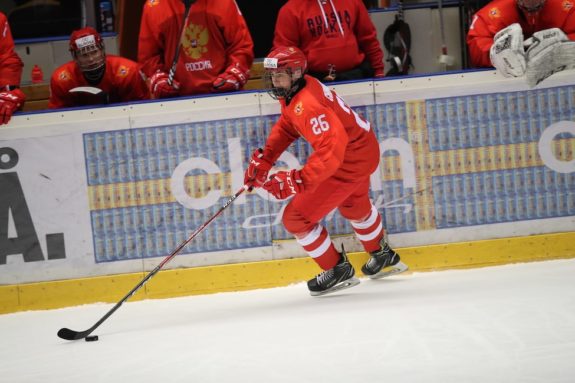One of the most significant question marks heading into the 2021-22 season for the Columbus Blue Jackets has been the team’s power play. Since the 2016-17 season, the Columbus power play could be described as abysmal, ranking 29th in the NHL with a success rate of just 17.2 percent. Improving the man advantage was a priority for the organization this offseason. One of the biggest changes came with the Cam Atkinson-Jakub Voracek trade. Voracek is a playmaker on the power play, recording 208 power-play points in 10 seasons in the league.
So far, the improvements made on the offseason have made a difference. Four games in, the Blue Jackets’ power play is fifth in the NHL at 33.3 percent; however, it is a tiny sample size (only 11 attempts). In this piece, I will do a deep dive into the power play, see if it is better, worse, or the same as last season’s, and if it is sustainable.
Blue Jackets’ 2021-22 Power Play Compared to 2020-21
Even though the power play has had a high conversion rate in the first four games for Columbus, statistically it is on pace to be similar, if not worse, to the man advantage for the Blue Jackets last season that only had a success rate of 15.4 percent. Below is a chart comparing the two seasons for quick reference.
| Year | Corsi For Percentage (CF%)/Fenwick for Percentage (FF%) | Expected Goal For (xGF) Per Opportunity | Scoring Chances For (SCF)/High-Danger Chances For (HDCF) Per Opportunity |
| 2020-21 | 82.08%/81.78% | 0.13 xGF | 0.91 SCF/0.30 HDCF |
| 2021-22 | 77.78%/72.41% | 0.098 xGF | 0.8 SCF/0.33 HDCF/0.93 SF |
As you can see, despite the higher average this season, it is worse in many statistical categories than it was last season. I will discuss some of these statistics below.
Blue Jackets’ Power-Play Shots, Expected Goals, and Chances Have Decreased
From 2020-21 to this season, overall, the Blue Jackets have had their shots, expected goals, and scoring chances on the power play decreased. In the 2020-21 season, they averaged 0.13 expected goals for (xGF) per opportunity, 0.91 scoring chances for per opportunity, and 0.30 high-danger chances for (HDCF) per opportunity, and 1.28 shots for (SF) per opportunity.
So far this season, most of those numbers are down, besides HDCF, which slightly increased to 0.33 per opportunity. The team’s xGF per power play has dropped to 0.098, their SCF per man advantage has dropped to 0.8, and they only average 0.93 SF per chance.
Currently, rookie right wing Yegor Chinakhov and Boone Jenner lead the team with power-play shots at three apiece.

This shows that the number of scoring chances and pucks on the net for Columbus has been less on the power play this season than last. At the rate it is going, this will not sustain a success rate above 30 percent.
Blue Jackets’ Power Play Possession Metrics Have Dropped
One of the biggest statistical differences of this season’s man advantage is in the possession metrics, which have significantly decreased from last season. The Blue Jackets had a Corsi for percentage (CF%) of 82.08 percent on the power play last season, meaning they had 82.08 percent of the game’s shot attempts when the man advantage was on the ice. This season that has fallen significantly to 77.78 percent, meaning they now only have 77.78 percent of all shot attempts.
Another possession metric that has dropped for Columbus from last season on the man advantage is the Fenwick for percentage (FF%). FF% is the percentage of the game’s shots on goal a team owns. Last season, the Blue Jackets’ power play finished with a FF% of 81.78 percent, which was 28th in the NHL. This season, their FF% has dropped nearly 10 points to just 72.41 percent.
Related: Blue Jackets’ Win Against Islanders Shows They Can Beat the Best
The Blue Jackets’ CF% and FF% on the man advantage were not good enough to sustain success last season, and with numbers even lower this season, there is no doubt that if they do not bring them up, they will indeed not have success on this season either.
Columbus Has Time to Fix Power Play Issues
While the Blue Jackets’ power play is statistically worse in many key areas than the unit that already struggled mightily a season ago, there are plenty of positives.
For one, new additions have helped. Adam Boqvist and Jake Bean have made a difference in the pace of the power play and how quick the puck moves. Voracek, who was brought in as a playmaker on the power play, already has four assists in five games on the advantage.

Also, Columbus is drawing penalties at a much higher rate than last season when they were the worst in the league on power-play opportunities. They only averaged 2.08 power plays a game, with less than two minutes of power-play time per season. This season, that has jumped to three power plays per game, and the time spent has more than doubled to 4.90 minutes per game.
Maybe one of the biggest reason’s to believe the power play will get better is this is a small sample size. The Blue Jackets still have 77 games to play and have only had 15 opportunities so far. There is no doubt the puck moves better, there are more cross-ice passes, and the puck is getting into dangerous areas. It just isn’t equating to scoring chances or shots. However, it is reasonable to believe that if they keep playing as they have on the man advantage, the stat increases, and goals will come.